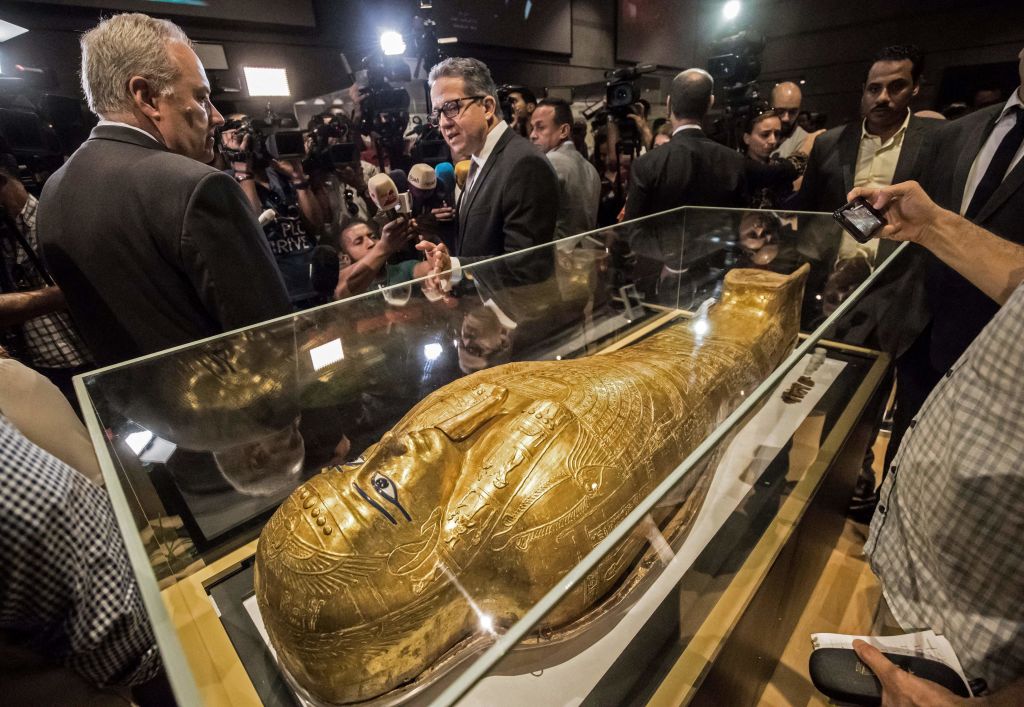Introduction
In a significant development in the world of art and antiquities, Serop Simonian, the alleged leader of a suspected Egyptian antiquities trafficking ring, was arrested in Germany and subsequently transferred to France. This arrest is linked to an investigation into the sale of potentially smuggled Egyptian antiquities, valued at a staggering €60 million ($64 million), to prestigious institutions such as the Metropolitan Museum of Art in New York and the Louvre Abu Dhabi. This scandal, which has captured international attention, raises questions about the provenance and legitimacy of these artefacts.
The Allegations
Serop Simonian, an 80-year-old dealer, is at the center of allegations involving the sale of Egyptian antiquities that may have been acquired through illegal means. These antiquities were purportedly sold to two renowned institutions: the Metropolitan Museum of Art in New York and the Louvre Abu Dhabi. The combined value of these transactions is estimated at €60 million ($64 million).

Previous Seizures and Legal Action
Last year, following a criminal investigation, several objects were seized, including a gold sarcophagus and five other antiquities from the Metropolitan Museum of Art. In addition to the seizures, legal action was taken against seven individuals, including dealers, collectors, and curators. Jean-Luc Martinez, the former president of the Musée du Louvre, was among those indicted. These actions led to a warrant for Serop Simonian’s arrest and instigated a comprehensive criminal investigation.
Simonian’s Defense
Serop Simonian vehemently denies any wrongdoing, asserting that the questioned antiquities were part of his family collection. According to Simonian, most of these objects were exported from Cairo in the 1970s when such trade was considered legal. They had been held in various German museums over the ensuing decades.
Involvement of Roben Dib
Roben Dib, the director of Simonian’s gallery in Hamburg, Germany, has also been transferred to France and charged in connection with the sale of several antiquities in March 2022. Dib, like Simonian, maintains his innocence and disputes any involvement in illegal activities.
Implications for Jean-François Charnier
Jean-François Charnier, the former scientific director of Agence France Muséums, is under suspicion for allegedly receiving favors from New York dealer Hicham Aboutaam. The latter’s gallery, Phoenix Ancient Art, had sold eight works to the Louvre Abu Dhabi between 2008 and 2015. Charnier was indicted on laundering charges related to the antiquities traffic ring in July 2022.
Links to the Louvre Abu Dhabi and the Role of Agence France Muséums
Agence France Muséums played a significant role in overseeing the development of the Louvre Abu Dhabi. Charnier’s alleged involvement in the sale of Egyptian antiquities to the museum has led to serious legal consequences, linking the laundering charges to the antiquities trafficking ring.
Aboutaam’s Connections
While Hicham Aboutaam is not directly implicated in the antiquities trafficking case, evidence on seized computers suggests that Aboutaam had funded the travels of Charnier and his close allies. Charnier has emphasised that these trips were not a quid pro quo but rather occurred after the sales from Phoenix Ancient Art to the Louvre Abu Dhabi.
The arrest and legal actions surrounding Serop Simonian and the alleged Egyptian antiquities trafficking ring shed light on the complexities of provenance, art acquisition, and the legal challenges in the world of antiquities. This ongoing investigation underscores the importance of scrutinising the origin and legality of artefacts within the global art market.
Feature Image: Egypt’s Antiquities Minister Khaled El-Enany (C) and Chargé d’Affaires at the U.S. Embassy in Cairo Thomas Goldberger (L) look at the Golden Coffin of Nedjemankh, on display at the National Museum of Egyptian Civilization in Cairo on October 1, 2019, following its repatriation from the US. Photo: Khaled Desouki/AFP via Getty Images.






